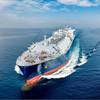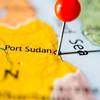Port Metro Vancouver today released its 2015 year-end statistics. Overall volume remained steady at 138 million tonnes of cargo as sectors experiencing declines were offset by others that hit new records. This is the port’s third consecutive year of strong cargo volumes, with new records set in the container, potash, and grain and agri-product sectors.
Cargo shipped in containers continued to show substantial growth due to increased trade with Asia, with a five per cent jump in units (known as twenty-foot-equivalent units or TEUs) for a new record of 3.1 million TEUs. Grain and agri-product exports increased by eight per cent over 2014 to 25.1 million metric tonnes, and potash exports were 8.7 million metric tonnes, up 15.6 per cent from the prior year.
Port Metro Vancouver is Canada’s largest port and it accommodates the most diversified range of cargo of any port in North America. This diversification has allowed the port to continue to grow, despite economic downturns in some sectors.
“These strong and consistent cargo volumes through Port Metro Vancouver demonstrate the diversification of the port and the Canadian economy,” said Robin Silvester, President and Chief Executive Officer of Port Metro Vancouver. “The many terminals throughout the port have done a remarkable job of facilitating Canada’s trade.”
"As Canada's largest port, Port Metro Vancouver is a leading example of how to operate a global port with respect for the environment, marine safety and security,” said the Honorable Marc Garneau, Federal Minister of Transport. “It continues to play a critical role in Canada's economy – importing goods from around the world and exporting Canada's resources to critical international markets – while also working with local communities and promoting environmentally sustainable operations.”
Grain handlers and railways implemented effective measures to handle the significant increase in grain exports after the bumper year in 2014. Bulk specialty crop (lentils, pulses) volumes reached 3.5 million metric tonnes, an increase of 20 per cent, with growth in exports to India and China.
There was a decline in breakbulk metal imports (construction steel and fabricated components) during the second half of 2015 as a result of lower capital investments in the energy sector; however with volumes of 1.4 million metric tonnes, 2015 remained the second highest year for metals on record. Foreign forest product exports (logs, lumber, woodchips and woodpulp) ended the year at 10.9 million metric tonnes, a slight decrease from 2014. Coal volumes were down by eight per cent mainly due to reduced demand from China and lower thermal coal exports from the United States.
“In the last five years, the port has grown by the equivalent of the annual volume of Canada’s second largest port – the Port of Montreal,” continued Robin Silvester. “And we anticipate that growth to continue at about the same rate over the next five years, despite the current slow-down.”
To manage that growth, the port authority is collaborating with all levels of government and other port stakeholders to ensure the port is responsive and prepared to meet increasing consumer and international demand. A number of infrastructure projects are being proposed to improve the flow of goods throughout the Lower Mainland and beyond, and the port authority is working with terminals and tenants to use port lands as efficiently as possible.
Canadian port authorities are mandated to safely facilitate Canada’s trade demand while protecting the environment and considering local communities. Port Metro Vancouver is recognized globally as a leader in sustainability, including by the likes of Sir Richard Branson and the Carbon War Room. In 2015 the port authority announced initiatives such as shore power for container vessels and the ECHO Program, the latter of which aims to better understand and manage the impact of shipping activities on at-risk whales throughout the southern coast of British Columbia.











